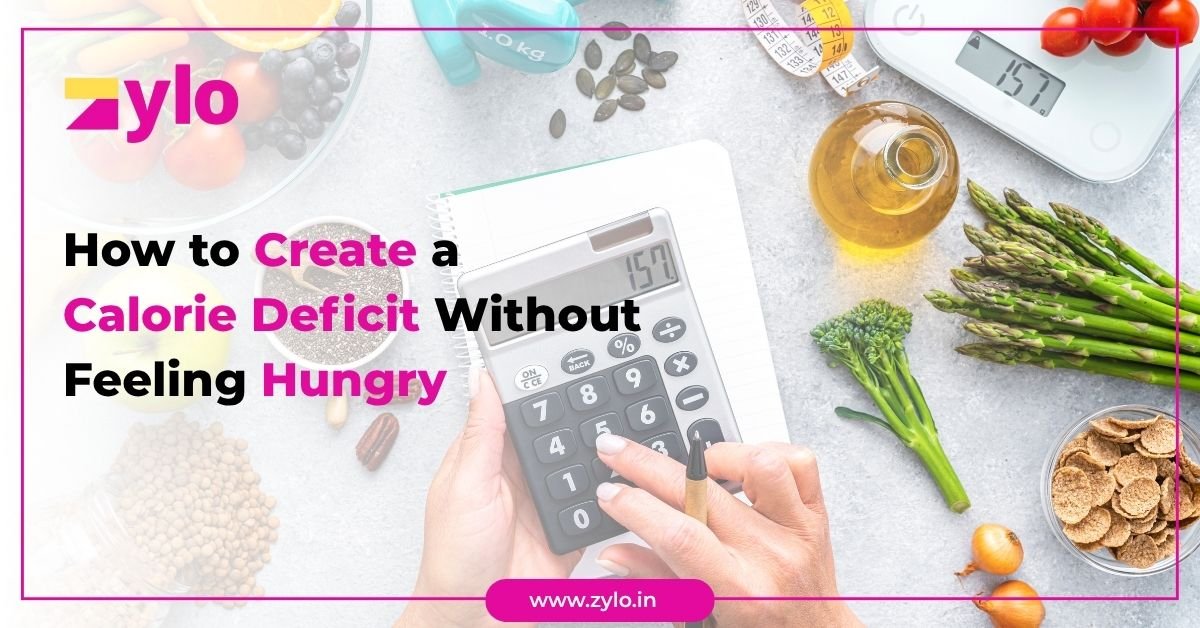If you’re trying to lose weight, you’ve probably heard that you need to be in a calorie deficit. But what exactly does that mean? Simply put, a calorie deficit occurs when you burn more calories than you consume. While the science behind it is simple, actually achieving a calorie deficit—without feeling constantly hungry or deprived—is where most people struggle.
That’s where smart strategies and online fitness classes can make a big difference. With guided workouts and nutritional support, it’s easier than ever to stay consistent, satisfied, and successful in your weight loss journey.
In this article, we’ll show you how to create and maintain a calorie deficit without starving yourself—and without giving up your favorite foods.
1. Understand Your Baseline: TDEE and BMR
Before you can safely reduce calories, you need to know how many your body needs to maintain its current weight. There are two important numbers:
- BMR (Basal Metabolic Rate): The number of calories your body needs at rest.
- TDEE (Total Daily Energy Expenditure): Calories burned through daily activities + workouts.
Use an online TDEE calculator to find out how many calories you need daily. To lose weight, aim for a deficit of 300–500 calories per day—which is enough for fat loss without making you feel deprived.
2. Avoid Extreme Diets and “Crash” Deficits
One of the biggest mistakes women make is cutting calories too drastically. Sure, it may show results fast—but it often leads to:
- Extreme hunger.
- Fatigue.
- Binge eating later.
- Muscle loss instead of fat loss.
A slow, steady deficit is not only safer but more sustainable. That’s why online fitness classes often combine moderate calorie cuts with effective workouts to keep your metabolism active.
3. Focus on Volume Eating: More Food, Fewer Calories
A calorie deficit doesn’t mean tiny portions. The trick? Eat low-calorie, high-volume foods like:
- Leafy greens, cucumbers, and bell peppers.
- Steamed veggies with seasoning.
- Broths and clear soups.
- Air-popped popcorn.
- Fresh fruits like watermelon, strawberries, and oranges.
These foods are rich in water and fiber—making you feel full without consuming too many calories. Build your meals around these.
4. Use Protein and Fiber as Your Hunger Shields
Protein and fiber are your two best friends in a calorie deficit:
- Protein: Helps you retain muscle and keeps you full longer. Aim for 20–30g per meal.
- Fiber: Slows digestion and stabilizes blood sugar. Add lentils, oats, chia seeds, or veggies.
Smart swaps like Greek yogurt instead of regular curd or adding flaxseeds to your smoothie can go a long way in keeping hunger at bay.
5. Stay Hydrated—You Might Just Be Thirsty
Mild dehydration can often feel like hunger. Drinking water regularly not only keeps you hydrated but also helps you eat less during meals.
Try these tips:
- Drink a glass of water 20 minutes before eating.
- Keep a water bottle near you at all times.
- Add lemon, mint, or cucumber for flavor.
6. Use Online Fitness Classes to Burn Calories Without Overtraining
Creating a calorie deficit isn’t just about eating less—it’s also about burning more. But you don’t have to spend hours at the gym. That’s where online fitness classes shine.
Whether it’s Zumba, HIIT, or yoga, virtual workouts offer:
- Flexibility to work out at home.
- Professional guidance.
- Fun, engaging formats that keep you motivated.
Even 30–45 minutes of structured workout, 5 days a week, can help you burn an extra 200–400 calories per day.
7. Eat Mindfully—And Slow Down
Mindful eating helps you listen to your body’s true hunger and fullness cues. Many people eat out of boredom or emotion, especially when dieting.
Start by:
- Putting your phone away while eating.
- Chewing each bite slowly.
- Eating without distractions.
- Checking if you’re truly hungry or just thirsty.
This practice alone can reduce calorie intake without even trying.
8. Plan Your Meals to Avoid “Hunger Panic”
Unplanned eating usually leads to overeating. Instead, take a few minutes each night to plan the next day’s meals.
Include:
- 3 balanced meals with protein, veggies, and carbs.
- 1–2 healthy snacks (nuts, fruit, yogurt).
- A treat in moderation if it helps you stay on track.
Planning prevents cravings from taking over and helps you stay within your calorie goal naturally.
9. Get Enough Sleep: The Hidden Weight Loss Tool
Sleep deprivation messes with your hunger hormones—ghrelin (hunger hormone) increases and leptin (fullness hormone) decreases when you’re low on rest.
Aim for 7–9 hours of sleep per night to:
- Keep cravings in check.
- Reduce stress.
- Support muscle recovery.
This is one of the easiest ways to support a calorie deficit without extra effort.
10. Be Kind to Yourself—Progress Over Perfection
Weight loss is a journey, not a punishment. If you overeat one day, don’t starve the next. Just return to your routine and focus on long-term consistency.
Use online fitness classes as your daily anchor—something you can rely on even when motivation dips.
Many women in India and across the world are now turning to home-based virtual fitness programs because they offer real results without disrupting daily life. You don’t have to be perfect—just consistent.
Final Thoughts
Creating a calorie deficit without feeling hungry is all about balance—not extremes. You don’t need to give up your favorite foods or follow a bland diet. With the right mindset, smart food choices, and support from online fitness classes, weight loss becomes a lifestyle—not a chore.
Whether your goal is fat loss, better energy, or feeling confident in your own skin, remember: it’s possible to do it without deprivation.



